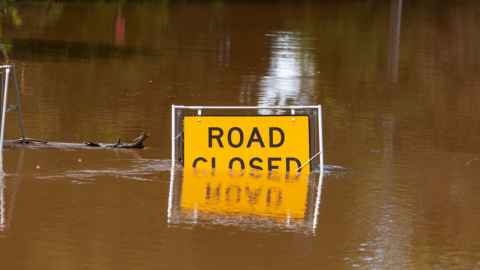What was so great about the Ministry of Works
28 March 2023
Opinion: The now defunct Ministry of Works is the kind of agency needed to fix our infrastructure disaster, argues Diane Brand, not the amalgam of Civil Defence and independent sub-contracting and consulting firms we've got.

In the aftermath of recent flooding some commentators are calling for the resurrection of a central government agency to deal with the clean-up and eventually the remediation of high-risk environmental conditions.
In the not-so olden days, less than a century ago, this was called the Ministry of Works, the agency dismantled by the neo-liberal fourth Labour Government when it privatised swathes of the state sector.
It came in various guises, the Ministry of Works, the Public Works Department, the Ministry of Works and Development, but provided technical expertise and manpower for over a century, building the national infrastructure of New Zealand from scratch: our railways, roads, hydro-electric dams, and public buildings – including post offices, police stations, prisons, universities, government centres, and overseas embassies.
By the mid-20th Century this organisation had the capacity to build the roads into the wilderness, construct the towns where the workers would reside, build a hydroelectric power project plant and govern a small community outside the local government system. The ministry had the investment in machinery and technology and a permanent workforce to keep doing this for decades from early beginnings in Coleridge to the last of the Clutha River projects run from Twizel.
I worked for the Ministry of Works and Development in the Power Division, which serviced the New Zealand Electricity Department as a client. I was the first woman architect to work in this engineering-centred enterprise, and it was the peak experience of my career in public and private practice. I endured the monikers and stereotypes hurled at the organisation in social settings: the Ministry of Jerks, and asides about leaning on shovels.
These barbs were easy to ignore because the MWD was a good place to work. The staff were well-trained professionals at the top of their game and the organisation had a respectable history in my field of architecture with the likes of Ernst Plischke, Chris Vallenduuk, Freidrich Newman and Gordon Wilson designing some of the country’s most innovative buildings of their era. It was an employer of many immigrants to the country in both the professional and construction sectors and a lifeline for workers during the Great Depression.
There was no profit margin to make on the work, so professional standards were high and quality assurance processes were rigorous – it was after all a bureaucracy run by engineers.
I learned to work with many different professions. The ministry had on-staff engineers of all stripes: hydraulic, civil, structural, electrical and mechanical, to name a few. There were also quantity surveyors, planners, landscape architects, industrial designers, fire experts, clerks of works and more. It was a true interdisciplinary ‘practice’ before the term was in common usage.
The organisation took seriously its mandate to train the next generation of built environment and infrastructure professionals, and gave graduates immediate and serious responsibility, while supporting them with sound advice, patience, and goodwill. The employment security in this public service milieu led to an easy camaraderie in the office which grew on the project sites when co-workers became actual neighbours in the Works towns.
There was no profit margin to make on the work, so professional standards were high and quality assurance processes were rigorous – it was after all a bureaucracy run by engineers. A healthy work culture prevailed with rare incursions of work into evenings or weekends and an active social club promoted workplace relationships beyond the drawing board or shovel.
Over time the ministry grew a large reliable permanent workforce with expertise in areas the private sector wouldn’t have found so appealing. I worked with a man who could keep the worst criminals behind bars. His expertise was specifying hardware that ensured the prisons were actually secure. I designed a lot of simple industrial buildings for machinery at power station sites at many different scales. Specialists in the engineering realm were critical on the hydro projects, with international expertise being frequently sought from other large infrastructure providers such in Australia the UK and the US. The work was backed by rigorous scientific enquiry and expertise. The organisation maintained the infrastructure it built in good working order thereby protecting the national investment.
The organisation I have described above is the antecedent of the new kind of agency needed to fix our current infrastructure disaster. The projects are similar, the scale and disciplinary mix can be replicated, and the ministry is a viable model as a politically neutral, non-commercial, scientifically informed, and technically competent agency. Most importantly the enterprise of recovery needs to be properly coordinated and joined up, unlike the current inefficient amalgam of Civil Defence and independent sub-contracting and consulting firms that scratch impotently away at the ever-growing consequences of climate change.
Professor Diane Brand is an architect and urban designer, Director of Academic Reviews and former Dean of the Faculty of Creative Arts and Industries.
This article reflects the opinion of the author and not necessarily the views of Waipapa Taumata Rau University of Auckland.
This article was first published on Newsroom, Bring back the Ministry of Works. 24 March, 2023.
Media contact
Margo White I Research communications editor
Mob 021 926 408
Email margo.white@auckland.ac.nz